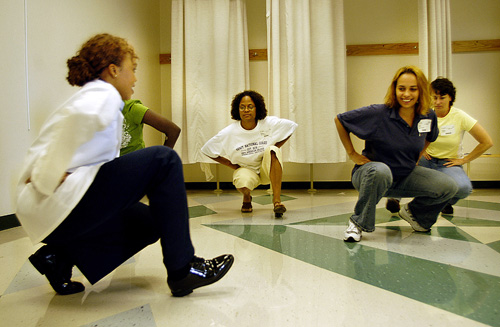Apache Longbow Helicopter 38 rockets and eight Hellfire Missiles under its stub wings.
Death flies in many forms. Two weapons very often confused
are rockets and missiles. In the broadest terms, missiles follow a guidance
system to their target. Rockets are pointed at the target, fired and follow a
ballistic path, gravity and wind resistance, to the target.
A missile is a guided rocket: a rocket is an unguided
missile.
The difference is similar to the difference between smart
bombs and dumb bombs. When released from
an aircraft, smart bombs fall to their target but correct their course. Dumb
bombs fall and hit wherever their ballistic path takes them.
A good example o the difference between rockets and missiles
is the basic load of the Apache attack helicopter. In all of its various models,
the Apache carries both rockets and missiles.
The standard load is 38 rockets, 19 per pod on each side of the
aircraft, and eight Hellfire missiles.
I watched Apaches fire salvos of Hydra 70mm rockets. The
pilots point the aircraft at the target and release pairs of rockets, one from
each pod, at the target. The rockets
blast from their tube to a speed nearly a half-mile a second, then fly
unpowered up to five miles to their target.
Hellfire missiles were originally designed as tank-buster
missiles. They have a dual warhead in the nose with an armor-piercing shaped
charge. When fired, it blazes to about 1,000 mph then flies up to five miles locked
on the target. If the target moves, the guidance system steers the missile to
the target.
So why would fire rockets when missiles will track a moving
target? Cost. An Apache helicopter with
a full load of 38 rockets and eight missiles has a million dollars in munitions
hanging on its pylons: $900,000 worth of Hellire missiles at $115,000 each and
$100,000 in rockets costing $2,800 each.
A full load of 38 rockets costs less than just one Hellfire
missile.
Rockets are dumb, missiles are smart, but if either one
hits, the target is destroyed.
Everything That Flies is Ballistic
Every flying object from a football to a Saturn V rocket
follows a ballistic path through the air as soon as the ball leaves the
quarterback’s hand or the rocket burns all of its fuel. Rockets, missiles, bombs, bullets, and every
sort of ball follows a ballistic path once it is thrown, fired, kicked, hit or
launched.
For Americans, the path followed by a long pass in a
football game is a beautiful example of a ballistic path. The thrown ball leaves the quarterback’s
hands at about thirty degrees and climbs rapidly in a nearly straight path to its
maximum height. After it reaches maximum height, the spinning football drops
rapidly into the arms of the running receiver.
Rockets, missiles bullets and bombs follow the same path
with a higher starting speed. Until the
advent of cruise missiles, the term ballistic missile was redundant. The fuel burned in seconds and from then on,
the missile was on a ballistic path all the way to its target.
Cruise missiles are jet planes with one high-explosive
passenger in Seat 1A.
-->























